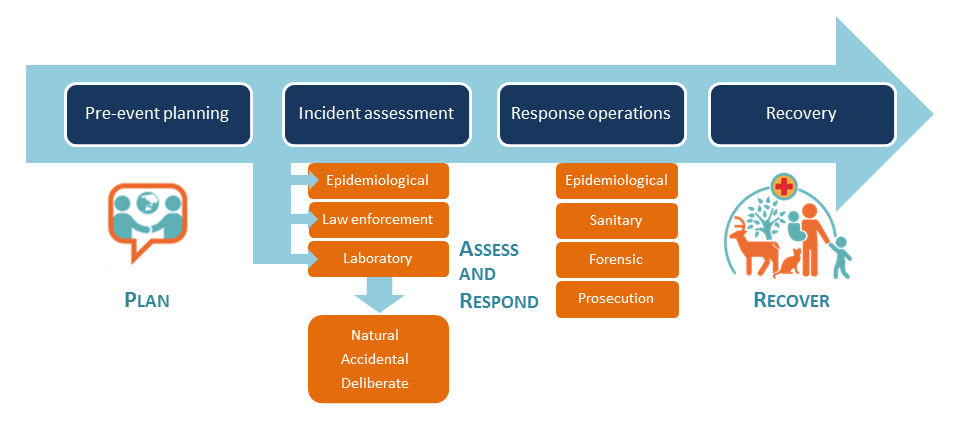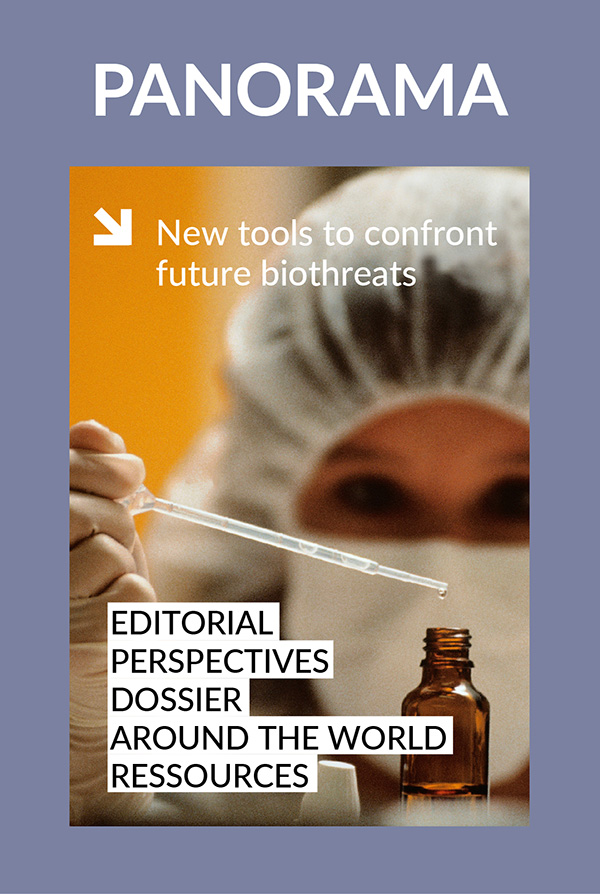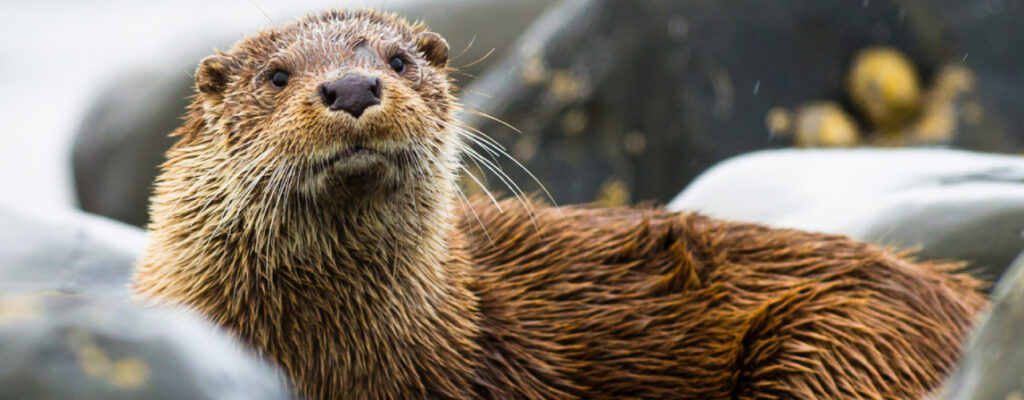Keywords
Authors
Gary Vroegindewey
Director, One Health Program, Lincoln Memorial University, Harrogate, Tennessee, United States
The designations and denominations employed and the presentation of the material in this article do not imply the expression of any opinion whatsoever on the part of the OIE concerning the legal status of any country, territory, city or area or of its authorities, or concerning the delimitation of its frontiers and boundaries.
The views expressed in this article are solely the responsibility of the author(s). The mention of specific companies or products of manufacturers, whether or not these have been patented, does not imply that these have been endorsed or recommended by the OIE in preference to others of a similar nature that are not mentioned.
The increased movement of people, animals and materials throughout the world, plus the continuing intensification and concentration of animal production systems, have increased the risk of biothreats. Combined with fragile and failing nation states and the rise in non-state actors, this increases the potential for the accidental release or intentional terrorist use of biological agents targeted at animals and humans.
The OIE is a committed partner in strengthening global health security. This commitment is already reflected in the Sixth Strategic Plan (2016–2020), in the OIE Biological Threat Reduction Strategy and through Global Conferences on Biological Threat Reduction. The OIE Biological Threat Reduction Strategy (2015) identifies key areas in which the OIE can address biological threats, such as calling upon its expertise to draft international standards and guidelines for national Veterinary Services to strengthen their capacity in this arena.
A survey of OIE European and West Asian Member Countries in 2014 demonstrated a gap in Veterinary Services preparedness, with approximately 47% of countries lacking either the authority or capacity to respond to intentional biological threats [1]. A key finding in the survey was the lack of standards of many countries for biothreat and disaster response.
The OIE formed an ad hoc working group in 2017 to draft guidelines for biothreat reduction (Guidelines for investigation of suspicious biological events), with the scope to consider the natural, intentional or accidental emergence of animal diseases, including zoonotic diseases. Experts from Veterinary Services and laboratories, academia, law enforcement and policy sectors took part in developing draft guidelines for national Veterinary Services to use as a framework to develop their capacity to prepare for and respond to biothreats, and to evaluate their current biothreat capability. These guidelines take into consideration existing and publicly available guidance and materials from a number of sources, including the appendices of the United Nations Secretary-General’s Mechanism for Investigation of Alleged Use of Chemical and Biological Weapons.
In drafting the guidelines it became clear that many of the functions required to effectively respond to a suspicious biological event may fall outside the daily operational activities of many Veterinary Services. Perhaps the most obvious involves responding to suspicious biothreat events from a criminal and terror perspective. Such an approach would include different methods of interviewing, sample collection, the preservation of evidence, and preparedness to testify in prosecution court cases.
To address the lack of standards for biothreat and disaster response in many countries, an OIE ad hoc group has drafted guidelines on biothreat reduction
These guidelines cover both the organisational as well as the operational requirements for Veterinary Services.
The foundation for biothreat reduction is the legislative authority for Veterinary Services to lead or support the investigation of biological events where criminal activity is suspected. Investigating these types of event generally requires the cooperation and collaboration of multiple stakeholders, including law enforcement, with Veterinary Services taking a supportive role to national investigation leads. Other organisational aspects of the guidelines include developing the leadership and personnel, facilities, and financial capability to address biothreats. A particular focus of the guidelines is highlighting the multisectoral nature of responding to biological events and the need to engage multiple partners, stakeholders and the public.
The OIE draft ‘biothreat reduction guidelines’ also address the operational aspects of preparedness and response; focusing on planning, the development of standard operating procedures and educational and training requirements. The guidelines include a table of indicators of suspicious biothreat events to assist in determining how to approach an investigation. These indicators include the appearance of disease in new species, in new areas, the reappearance of eradicated diseases, or novel agents. Further operational areas covered by the guidelines include: logistics, joint investigations, safety and health, laboratory operations, crisis management centres and crisis communications.

The OIE Guidelines for investigation of suspicious biological events, combined with links to technical resources, will provide national Veterinary Services with an invaluable tool to develop, strengthen and assess their capacities in the biothreat environment.
http://dx.doi.org/10.20506/bull.2018.1.2770
References












